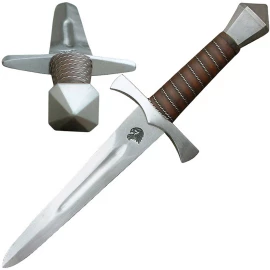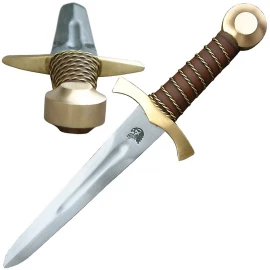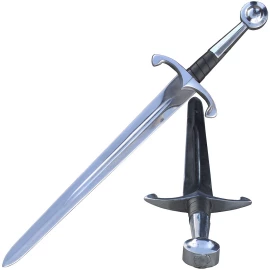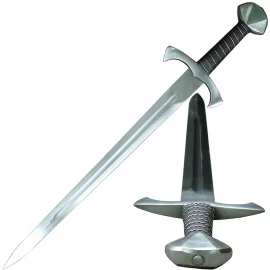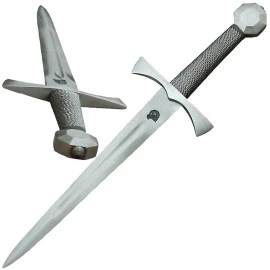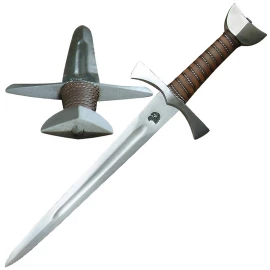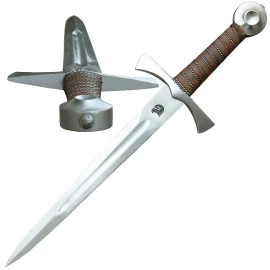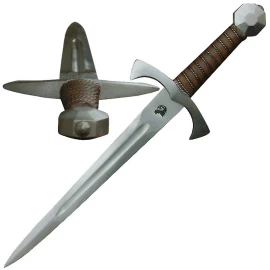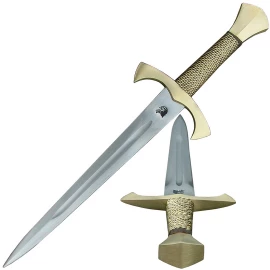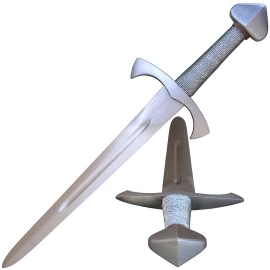Medieval practical daggers
The dagger is symbolically ambiguous. It may be associated with cowardice and treachery due to the ease of concealment and surprise that someone could inflict with one on an unsuspecting victim—many assassinations were reportedly carried out using one. Victims of such assassinations included Julius Caesar, who suffered from 23 stab wounds from irate members of the Roman Senate. A cloak and daggerattack is one in which a deceitful, traitorous, or concealed enemy attacks a person. On the other hand, the dagger may symbolically suggest a determination to become courageously close to the enemy.
Filter products
Medieval practical daggers
If a warrior lost his sword in a battle or he could not use it anymore, he could still draw his dagger. The dagger differs with the blade from the knife mainly in its shape - it is symmetrically ground on both sides and is mainly intended for stabbing. The so-called "dagger" can be found in many early medieval graves since the 9th century. The dagger was probably worn on the right side, deduced from the placement of the knife and dagger in the tomb. If the dagger was worn separately, then maybe on the left side instead of the sword. As it was usual with the sword, the dagger was worn in a scabbard - made of leather or wood (covered with fabric or leather) hung on the side on the belt.
With the advent of very protective plate armour during the Middle Ages, the medieval dagger became increasingly useful as a good close in weapon for stabbing through the gaps in armour. Books offering instruction on the use of weapons predominantly described that the medieval dagger be held in the hand with the blade pointing from the heel of the hand both in armour and out of armour, and used by making downward jabs. Straight jabs from a normal hammer grip were also used, though icepick style jabs are more commonly depicted in manuals. The dagger was quite a common murder weapon, easily used by commoners or vengeful aristocrats who wished to remain anonymous.

